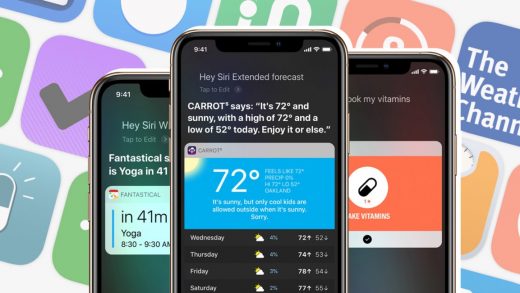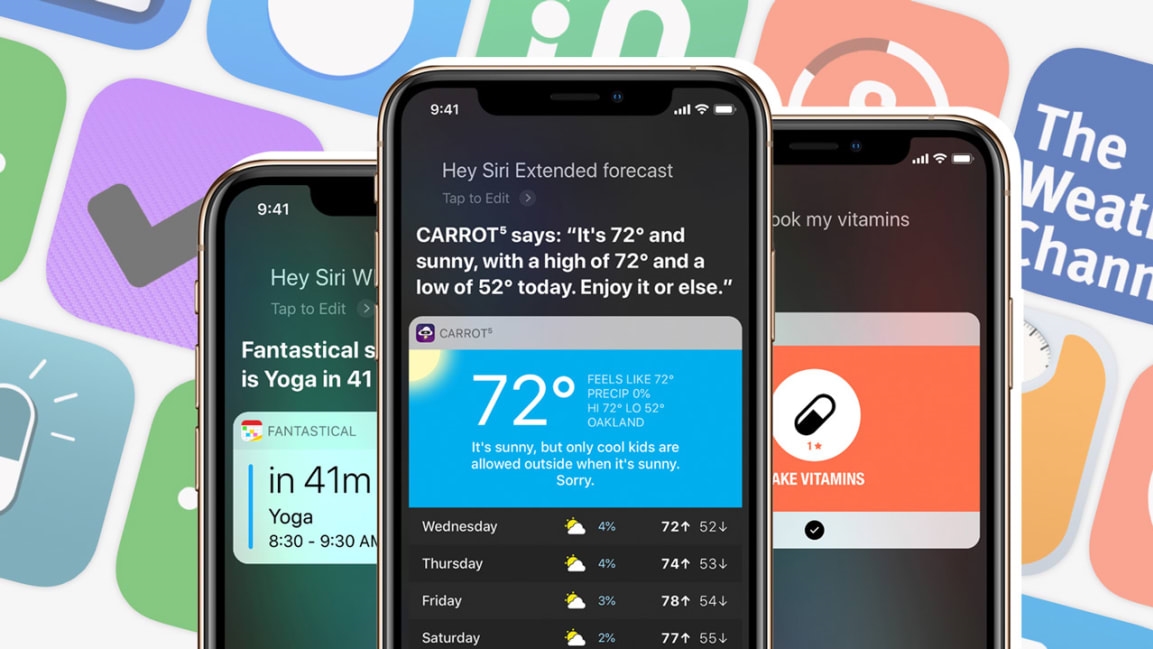You should be using iOS’s powerful new Shortcuts, and here’s how
Shortcuts is one of the neatest new features in iOS 12. But it’s easy to miss just how useful it is.
While Shortcuts can help you get things done faster on an iPhone or iPad, simply poking around the Shortcuts app in iOS 12 doesn’t do the feature justice. Most of Apple’s own example shortcuts won’t save you much time. And if you aren’t already an automation-tool aficionado, it’s easy to feel lost if you try to create a custom Shortcut on your own.
Still, you don’t have to be a tech wizard to take advantage of iOS 12 Shortcuts. I’ll walk through some of the best Shortcuts to use, along with some basic concepts for building your own Shortcuts from scratch.
Simple iOS 12 Shortcuts
The best way to get started with iOS 12 Shortcuts is to enable a few that other people have created already. Anyone can share a link to an existing Shortcut, so all you have to do is click on it from an iPhone or iPad, then select “Get Shortcut” to add it to your collection in the Shortcuts app.
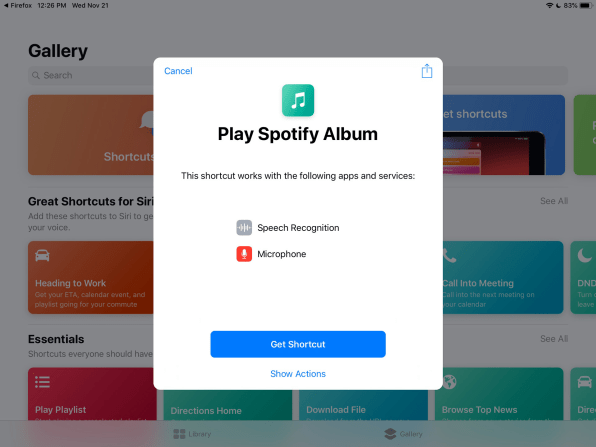
For a basic example, check out the Dictate & Share Shortcut. Once triggered, it will listen for voice dictation and open the Share sheet, letting you copy the text to your clipboard or send it into another app. I’m using this to take quick notes in Google Keep without having to open the app directly.
I also made my own Time to Focus Shortcut that tells my nearby Amazon Echo to play heavy rain sounds, while also turning on Do Not Disturb on iOS.
Some other examples that I’ve found useful:
In some cases, third-party apps can help add Shortcuts for you. Google, for instance, now offers a handy Shortcut for talking to Google Assistant through Siri. Just download the latest version of Google Assistant, then look for the “Add to Siri” button. You can then record a custom phrase or just use “Hey Google.” You’ll still have to say “Hey Siri” or tap the Siri button first, but it’s still a lot faster than opening the app directly.
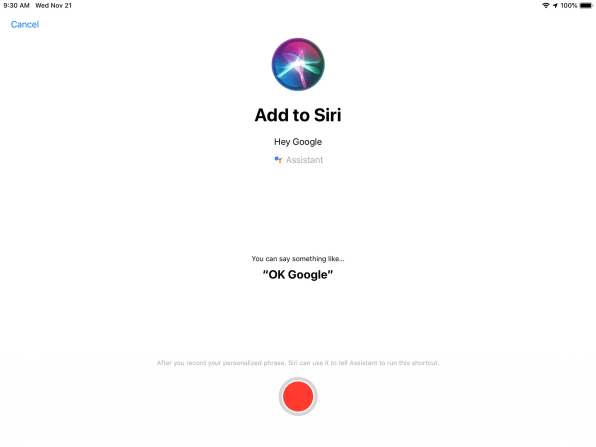
Pandora offers something similar for turning on internet radio stations through Siri. Just open the Pandora app, head to Settings, select “Add to Siri,” then choose a radio station and record the phrase you’d like to use. Unfortunately, each Shortcut only works with one station, but you can set up multiple Shortcuts for each of your favorites.
Faster access to Shortcuts
Convenient as Shortcuts may be, having to open the Shortcuts app to use them is a waste of time. Instead, consider adding shortcuts to your Shortcuts through widgets, home screen icons, and Siri.
Start by opening the Shortcuts app, then hitting the three-dot button on the Shortcut you want to access. Hit the Shortcut’s menu button (which looks like a pair of toggle buttons), and you’ll see a set of options:
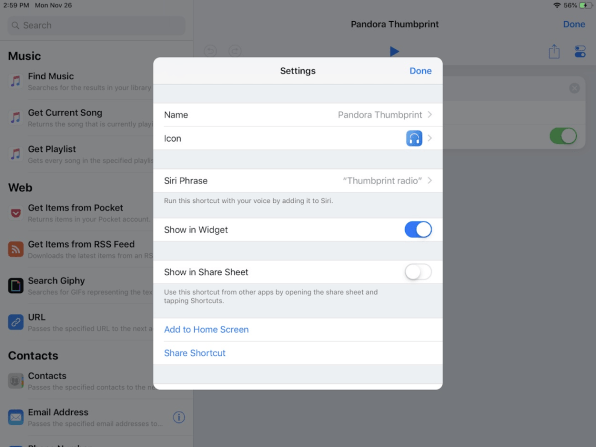
Add to Siri lets you record a custom voice command for launching the Shortcut. With the aforementioned Spotify artist search, for instance, I used the phrase “Spotify artist.” (One downside: You can only associate one phrase with each Shortcut, and your voice commands must match this phrase exactly, so you need to remember the precise wording you chose.)
Show in Widget adds a button for the Shortcut to your device’s widgets list, which you can access by swiping right from the home screen or from Notification Center. Make sure your widgets list includes Shortcuts by scrolling to the bottom of the list, selecting Edit, finding Shortcuts under the “More widgets” section, and pressing the + button. You can then drag the button that looks like three horizontal lines to move the widget higher up your list.
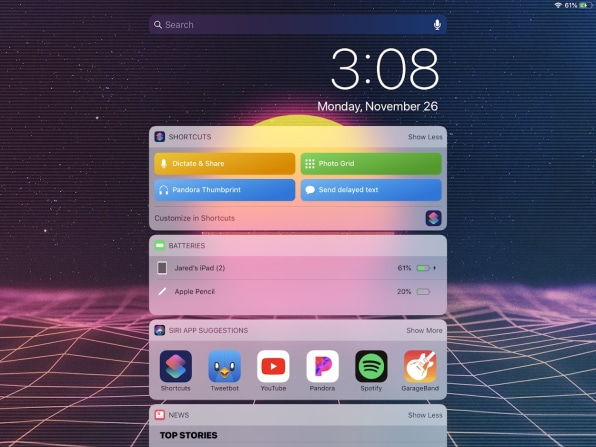
Add to Home Screen creates an Shortcut icon that lives alongside your other apps. To modify how this icon will look, hit the Icon button first, then select a color and a glyph from the menu. (You can also use images from your camera roll.) Once you’ve selected an icon, hit Add to Home Screen, then follow the instructions on the Safari page that pops up.
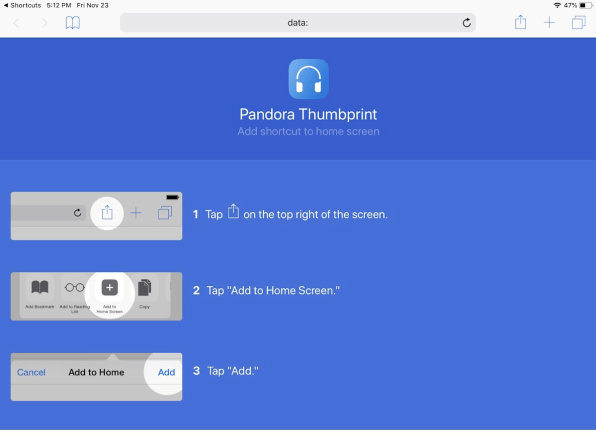
Contextual Shortcuts
Some Shortcuts can’t be used directly through the app or with voice commands. Instead, they use the Share button to perform an action inside specific apps.
A great example is Download YouTube, a Shortcut that can save videos to your Camera Roll for offline viewing without any additional apps. Once you’ve activated it, load up a video in the YouTube app, then hit the Share button. You can then select “Shortcuts” (you may have to hit “More” first to see this option), then select “Download YouTube.” After the Shortcut runs, choose “Save to Album,” and it’ll appear in your gallery.
Some other examples that use the Share button:
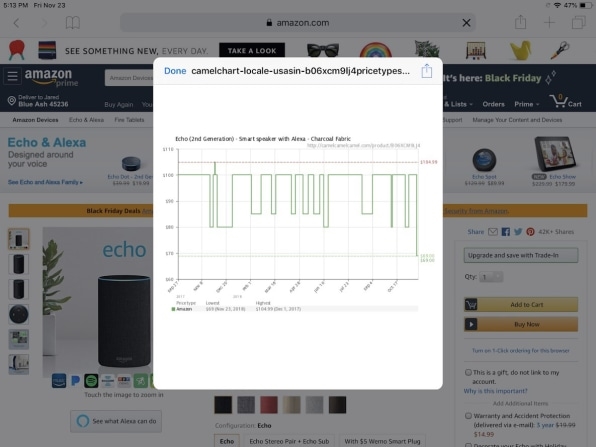
Rolling your own Shortcuts
Now that you’re feeling comfortable with how Shortcuts work, let’s take the next step and build one from scratch.
For this example, I’m going to use Siri voice commands to add grocery list items in Wunderlist. This will allow me to say “Add Groceries,” then dictate the grocery item without ever having to open Wunderlist directly. (You can also set up similar Shortcuts with other to-do list apps, such as Omnifocus and Trello.)
1. We’ll start by creating a custom Siri voice command that you can use to activate this Shortcut. Open Shortcuts, then select Create Shortcut. Select the icon that looks like two menu toggles, then select “Add to Siri.” Hit the record button, and utter whatever phrase you’d like to use as your voice command. (I chose “Add Groceries.”) Optionally, give the Shortcut a name and an icon in the same menu, then hit “Done” when you’re finished.
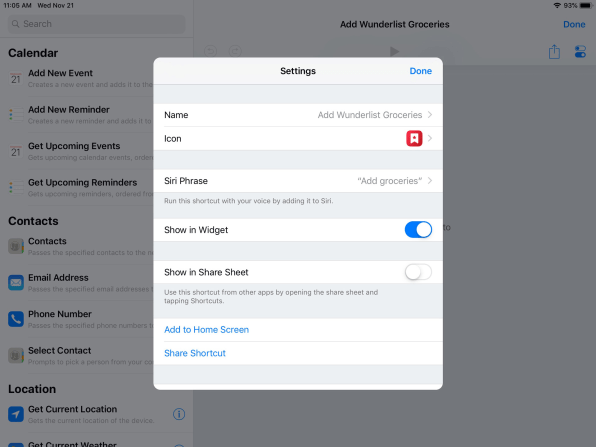
2. Next, we’ll have Siri listen for the name of your grocery item after you’ve triggered the shortcut. From the search bar, type “Dictate,” then select “Dictate Text.”
3. Finally, we’ll set up Wunderlist to accept the dictated text as the name of a new grocery list item. In the search box, type “Wunderlist,” then select “Add Wunderlist Task.” (If you’d like to use a different to-do service, enter it in the search box and look for an “add” command.) In the Wunderlist box, select “Title,” then select “Dictated Text” from the top row of the keyboard. You can also select the List in which items should be added.
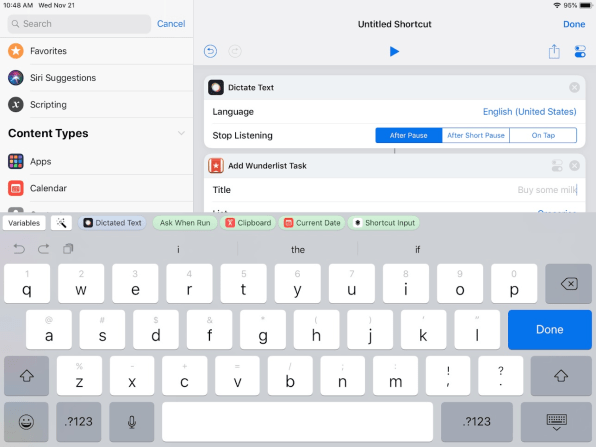
4. Hit “Done” in the Shortcuts menu to complete the process.
Now, you can say “Hey Siri, Add Groceries,” then say the name of the grocery item when prompted. The Shortcut will take care of adding the item to the list you’ve chosen.
Much of the fun of Shortcuts involves figuring out how to mash together input sources and actions. To get a sense of what’s possible, tap on the Search box, then scroll through the Content Types section for a list of everything that your apps can do. If you need even more inspiration, you’ll find plenty of additional Shortcuts at MacStories, the Shortcuts subreddit, and ShortcutsGallery.
(52)

